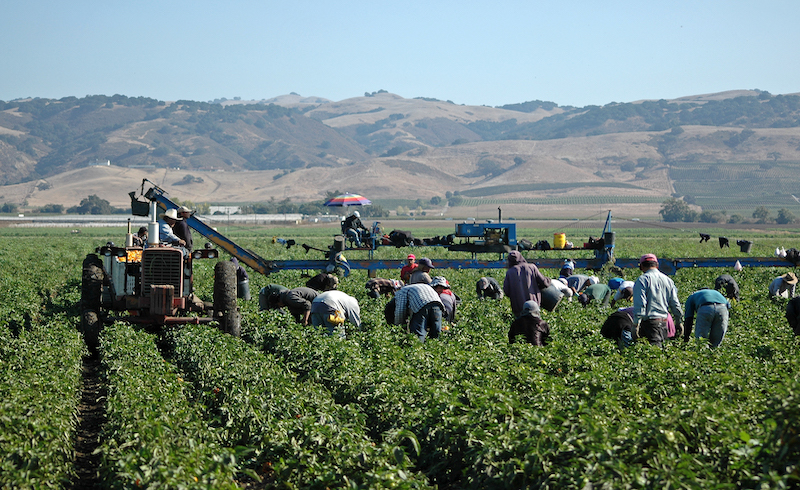
The Court’s unprecedented decision applying the Takings Clause to regulatory access will have limited impact.
In Cedar Point Nursery v. Hassid, the U.S. Supreme Court enlarged the potential scope of the Takings Clause by applying it against a California regulation that granted union organizers of farmworkers limited access to the property of growers who employed the workers.
The decision was the Court’s first application of the U.S. Constitution’s Takings Clause to require compensation from the government for regulatory access to commercially used private property, rather than for the effective prohibition of some commercial use or for the seizure of a property right for governmental or public use. Nevertheless, beyond effectively basing on the constitution some of the Court’s earlier interpretation of federal labor law, the decision may have limited impact on federal and state regulatory law.
Agricultural laborers are not covered as employees by the National Labor Relations Act (NLRA) and thus their labor relations may be governed by state law. As a result, California regulates agricultural laborers through the regulation at issue in Cedar Point, which provides that the self-organizational rights of employees include “the right of access by union organizers to the premises of an agricultural employer for the purpose of meeting and talking with employees and soliciting their support.” After filing written notice to the employer, a labor organization may “access” an agricultural employer’s property for up to four 30-day periods in one calendar year.
Furthermore, two organizers per work crew may enter the employer’s property for up to one hour before work, one hour during the lunch break, and one hour after work. Organizers may not disrupt work but are otherwise free to speak with employees. Interference with organizers’ right of access can result in sanctions against the employer.
Two California fruit growers challenged the regulation as an uncompensated taking under the Fifth Amendment’s Takings Clause, which states that private property should not “be taken for public use, without just compensation.” Agreeing with the growers, the Court held that the California regulation was a “per se taking” because it partially appropriated the growers’ property right to exclude “invasion” by the unwelcome.
In a majority opinion written by Chief Justice John Roberts, the Court declined to follow precedent that had accepted regulatory “use” restrictions subject to a balancing of factors such as the economic impact of the regulation, its interference with reasonable investment-backed expectations, and the character of the government action.
The Court also rejected the view of the lower court’s decision that the regulation’s temporal limitations on the union organizers’ right of access rendered it subject only to balancing rather than to the treatment of a per se taking that granted “permanent and continuous” access. Chief Justice Roberts asserted that “the duration of an appropriation … bears only on the amount of compensation” due.
The Court’s treatment of the access regulation as an appropriation of the property right to exclude, rather than as a limited regulatory restriction on the use of the land for commercial agricultural purposes, was without direct precedent. As Justice Stephen Breyer stressed in a dissent joined by Justice Sonia Sotomayor and Justice Elena Kagan, the regulation did not grant the government any right to exclude; it only partially restricted the growers’ exclusionary authority.
In all the cases on which Chief Justice Roberts relied, the government had effectively fully appropriated some aspect of private property either for its own use or for the use of the general public. For instance, in United States v. Causby, the Court held that the government’s frequent flying of military aircraft low over the Causby farm, “grazing the treetops and terrorizing the poultry,” took ownership of the airspace above the land and “destroyed the use of the property as a commercial chicken farm.” In Nollan v. California Coastal Commission, the Court held that a state’s imposition of an easement across a landowner’s property constituted a taking because the general public was granted a “permanent and continuous right to pass to and fro.”
Justice Breyer argued that the majority’s treatment of these cases—especially its denial of the importance of a distinction between the permanent taking of a property interest and the temporary nature of regulatory access—threatened a range of government regulatory oversight functions, “from examination of food products to inspections for compliance with preschool licensing requirements.”
Chief Justice Roberts responded to Justice Breyer in part by asserting that the “government may require property owners to cede a right of access as a condition of receiving certain benefits, without causing a taking,” but “unlike standard health and safety inspections, the access regulation is not germane to any benefit provided to agricultural employers or any risk posed to the public.”
Yet, as Justice Breyer suggests, California regulatory officials had determined that the public interest is served by agricultural workers having a fully informed opportunity to protect their security and safety through collective bargaining with their property-owning employers. Why should that determination be given less weight than a determination of a public safety or health risk?
Perhaps Chief Justice Roberts intended to draw a distinction between access for public officials and access for private parties who are authorized to play a part in a regulatory scheme. If so, the impact of Cedar Point may be limited to the restriction of the facilitation of collective bargaining.
Even for the regulation of union organizing for collective bargaining, however, Cedar Point poses open questions. In a concurrence, Justice Brett Kavanaugh noted that the Court’s constitutional ruling accorded with the Court’s 65-year-old interpretation of the NLRA in NLRB v. Babcock & Wilcox Company. Yet the Babcock decision allowed that, “when the inaccessibility of employees makes ineffective the reasonable attempts by nonemployees to communicate with them through the usual channels, the right to exclude from property has been required to yield.” Might Cedar Point depend on the farm workers not living on the grower’s property?
Chief Justice Roberts distinguished PruneYard Shopping Center v. Robins, in which the Court rejected a Takings Clause challenge to an interpretation of the California Constitution requiring shopping centers generally opened to the public to allow handing out leaflets. But in Lechmere v. NLRB, a more recent interpretation of the NLRA, the Court required the NLRB to apply Babcock to a shopping center parking lot open to the general public. After Cedar Point, could Congress overrule Lechmere through an amendment to the NLRA?
Although Cedar Point is unprecedented in applying the Takings Clause to regulatory access, its ultimate impact and scope may be limited to union organizers. Even if it is so limited, however, questions remain for future consideration.
This essay is part of a nine-part series, entitled The Supreme Court’s 2020-2021 Regulatory Term.




